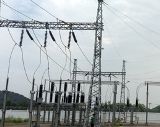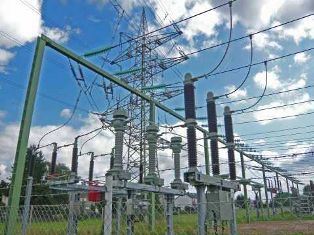Conclusion for the repair of the 110 kV busbar system

In the case of working electrical installations, periodic repairs of all equipment elements are carried out in the prescribed manner. Carrying out basic and current repairs of equipment allows you to promptly detect and prevent the occurrence of malfunctions or deviations from the normal operation of electrical installation equipment.
Bus station system — this is one of the sections of the substation switchgear, which, like other items of equipment, is subject to periodic inspection and repair. To carry out work on the bus system, it must be taken out for repair, that is, disconnected (disabled) and grounded. Conclusion for the repair of bus systems One of the most challenging tasks for service personnel in an electrical installation. The difficulty in performing operations in this case is due to the presence of differential busbar protection. Let's look at the procedure for pulling out a 110 kV bus system for repair.
Withdrawal of the busbar system for repair means that one of the 110 kV voltage transformers is disconnected, therefore in the first place all the secondary switching circuits which are fed by this voltage transformer must be transferred to another voltage transformer which remains in service or, if necessary, decommissioned …
All connections that are fixed behind this busbar system must be re-fixed to another 110kV busbar system that remains in operation. In this case, operations to transfer connections to another bus system include operations to transfer voltage circuits, which, as mentioned above, must also be transferred to another voltage transformer.
When re-fixing connections from one busbar system to another, it is also necessary to re-fix the current circuits of the bus differential protection of these connections. If this is not done, DSB misoperation will occur as a result of differential current generation (protected balance output) and de-energization of 110 kV bus systems.
Therefore, to avoid erroneous operation of the bus differential protection, set this protection to non-permanent mode. Protection is removed from this mode only after re-fixing all connections and checking the correctness of the operations performed. The absence of differential current on the DZSh is a criterion for the correctness of the performed operations for re-fixing the connections.
In addition, before carrying out work with bus disconnectors on re-fixed connections, the protection of the differential bus is set to prohibit its output in the event of a fault in the current circuits, and the prohibition of automatic restart of the bus system in the event of the operation of the bus switch is turned on. These measures are taken primarily to ensure the safety of service personnel when performing operations with live 110 kV bus disconnectors.
In addition to the voltage circuits of the protection of outgoing connections, it is necessary to transfer the circuits of electric energy meters to 110 kV connections. If you do not transfer the voltage circuits of the measuring devices after the bus system is removed for repair, these devices will not work, which will lead to an underestimation of the consumed and delivered electrical energy. Taking into account the large volumes of consumption and production of electrical energy from 110 kV substations, the underestimation of electrical energy leads to significant losses.
After all secondary switching circuits of the voltage transformer of the repaired busbar system are transferred, the busbar system is vented. The bus system is de-energized by turning off the bus switch. The lack of voltage in the bus system is monitored according to the readings of the kilovoltmeters VT of the given bus system.
The voltage transformer circuit breakers are then turned off.As a rule, in the secondary switching circuits of voltage transformers (star, delta) it is possible to combine these circuits with another voltage transformer. Therefore, in addition to turning off the automatic devices of the secondary circuits of the VT, it is necessary to create a visible gap.
Visible interruption of the circuits is carried out by removing the working covers of the test blocks with the subsequent installation of blank (empty) covers. In the absence of test blocks in the secondary circuits of the VT, a visible gap is created by disconnecting and shorting the terminals of the secondary windings of the VT from the circuit breakers.
If fuses are used in the secondary circuits, their removal also provides a visible break.
Then, the bus disconnector of the voltage transformer of the bus system to be repaired is turned off and grounding operations of the bus system are carried out. In accordance with the rules for the safe operation of electrical installations, the busbar system can be grounded by installing a single grounding.
As a rule, the earthing of the busbar system is done by switching on the fixed earthing blades of the transformer voltage busbar disconnector. Depending on the layout of the 110 kV switchgear, there may be earth blades on bus disconnectors on other connections, for example a busbar switch.
If the repair of the busbar system is combined with the repair of the bus disconnector, on which the fixed earthing blades are connected to the busbar system, then additional portable earthing must be installed.This is due to the fact that the performance of work on the revision and repair of the bus disconnector ensures the performance of switching operations on it, including operations for turning on and off fixed earthing blades.

